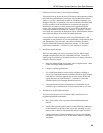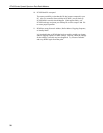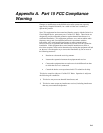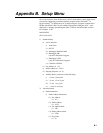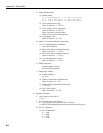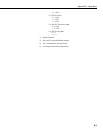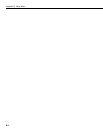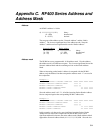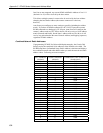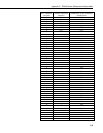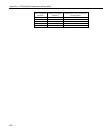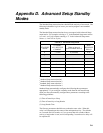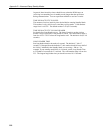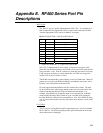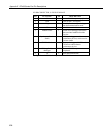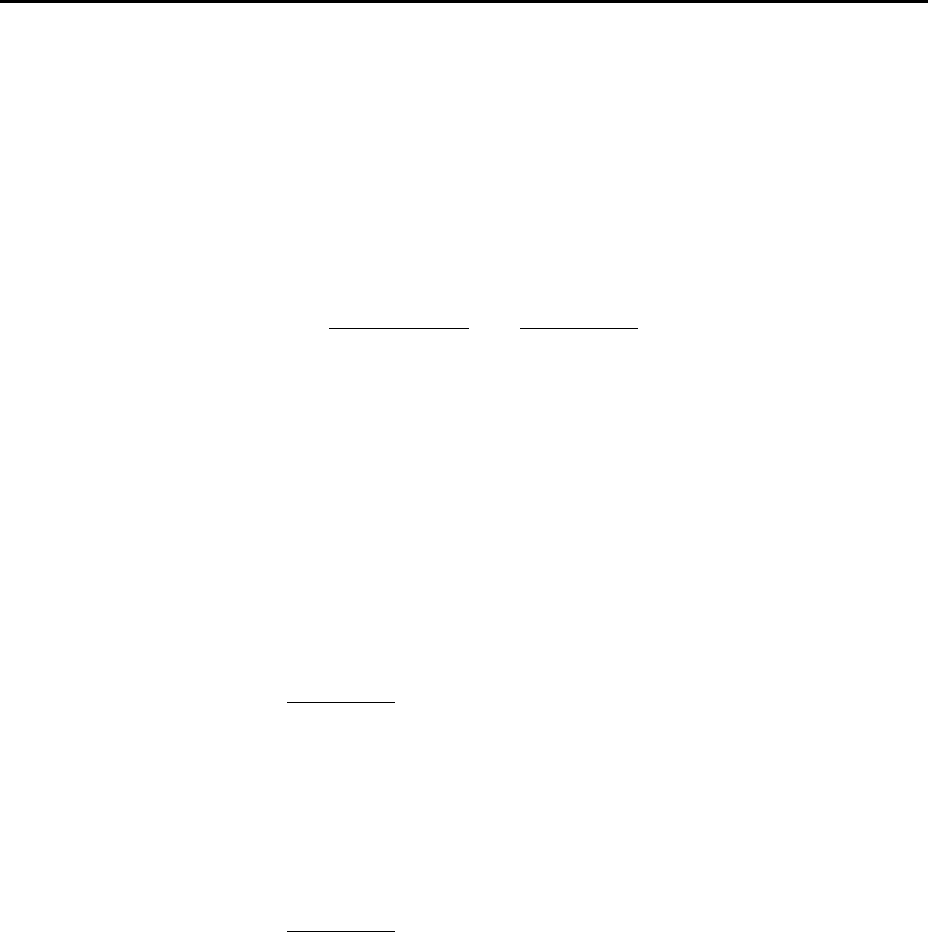
C-1
Appendix C. RF400 Series Address and
Address Mask
Address
An RF400’s address is 16 bits:
(0 - 1111,1111,1111,1111) binary
(0 - ffffh) hexadecimal
0 – 65535) decimal
The two parts of the address are the “Network Address” and the “Radio
Address.” The six most significant bits of the address are the “Network
Address”, and the ten least significant bits are the “Radio Address.”
Network Address Radio Address
(0 - 11,1111) (0 - 11,1111,1111) binary
(0 - 3fh) (0 - 3ffh) hexadecimal
(0 – 63) (0 – 1023) decimal
Address mask
The RF400 has a user programmable 16-bit address mask. Like the address,
the address mask is divided into two parts. The six most significant bits are the
Network Address Mask and the remaining ten bits are the Radio Address
Mask.
When an incoming packet header’s address is compared with the RF400’s
address, only the address bits that correspond to address mask “1”s are used in
the comparison.
Example 1
Incoming Packet’s Header Address xxxx xxxx xxxx xxxx
RF400’s Network Address Mask 1111 11
RF400’s Network Address yyyy yy
RF400’s Radio Address Mask 11 1111 1111
RF400’s Radio Address zz zzzz zzzz
Since the address mask is all “1”s, all of the incoming Packet Header Address
bits are compared against the corresponding RF400’s address bits.
Example 2
Incoming Packet’s Header Address xxxx xxxx xxxx xxxx
RF400’s Network Address Mask 1111 11
RF400’s Network Address yyyy yy
RF400’s Radio Address Mask 11 1111 0000
RF400’s Radio Address zz zzzz zzzz
In this example, only the twelve most significant incoming Packet Header
Address bits are used in the comparison with the RF400’s twelve most
significant address bits because the entire address mask (Radio Address Mask
appended to Network Address Mask) is 1111,1111,1111,0000. Since the last



